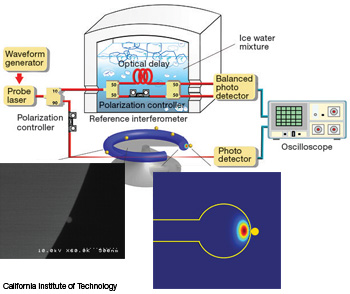Scatterings
Better Nanoparticle Detection with Optical Microcavities
Scientists have devised a technique for spotting beads with a radius as small as 12.5 nm in solution, and they have improved the signal-to-noise ratio for sensing the influenza A virus by a factor of 10.
 Theoretical simulation of the mode field in a cross-section of the toroidal microresonator.
Theoretical simulation of the mode field in a cross-section of the toroidal microresonator.
Over the past 15 years, scientists have been leveraging the properties of optical microresonators to detect smaller and smaller particles. One group of researchers has devised a technique for spotting beads with a radius as small as 12.5 nm in solution, and they have improved the signal-to-noise ratio for sensing the influenza A virus by a factor of 10 (Proc. Natl. Acad. Sci. USA 108, 5976).
…Log in or become a member to view the full text of this article.
This article may be available for purchase via the search at Optica Publishing Group.
Optica Members get the full text of Optics & Photonics News, plus a variety of other member benefits.
